Perimeter Overflow Pool: How It Works, Materials & Mistakes to Avoid
Have you ever seen a pool that looks like a mirror? Water blends seamlessly into the edge, perfectly level with the deck, flowing evenly in every...
6 min read
Vanessa Petros
:
Aug 25, 2022
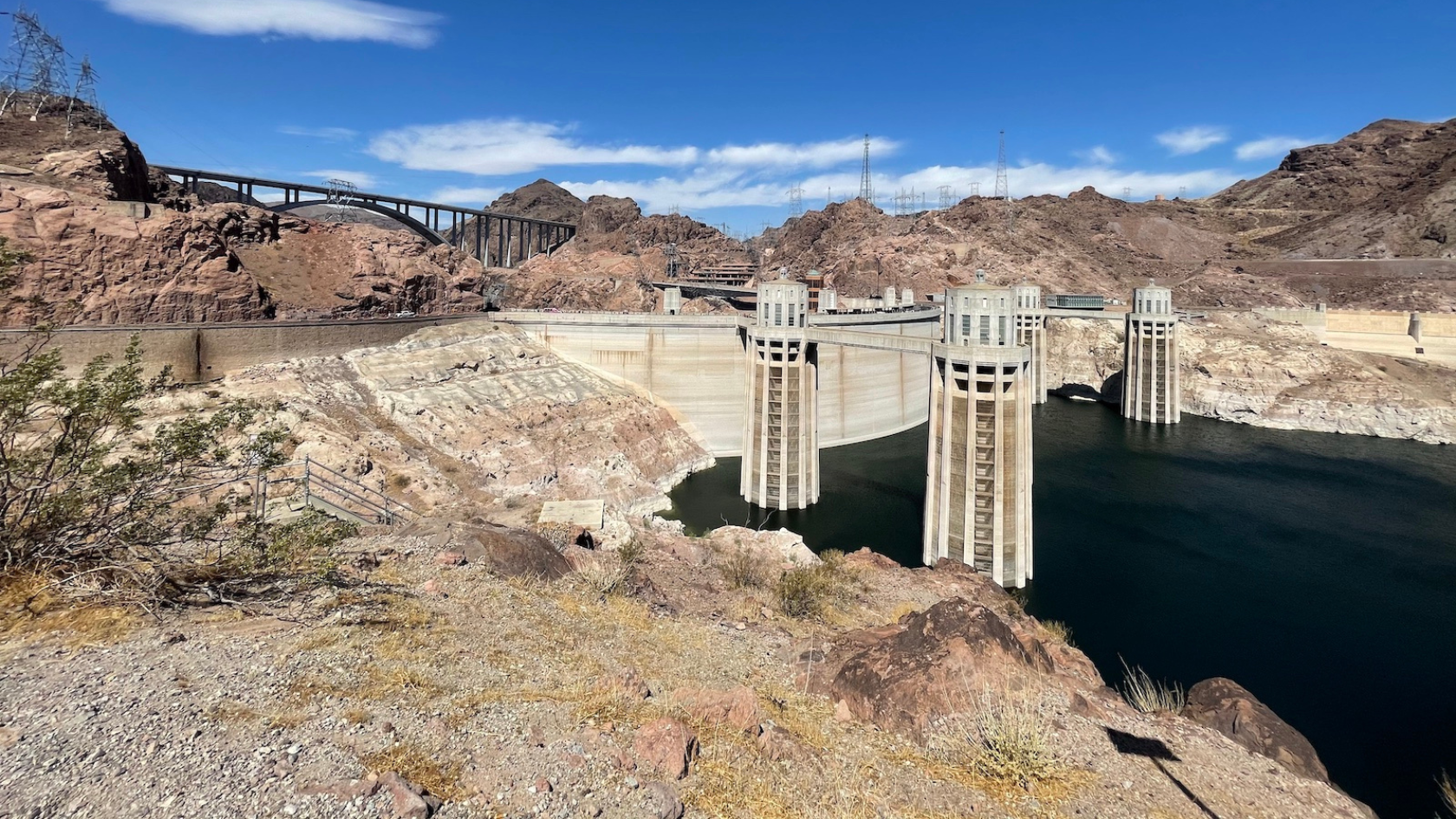
No one likes going through a dry spell, but these types of seasons are particularly troubling when you’re in the market for an inground pool.
Imagine working tirelessly with your contractor for months and at long last, your dream pool is built and primed for your enjoyment and satisfaction. You’re excited to have it filled so you can take that first, long-awaited dive… but then you get a notice on your phone that there’s been a state-wide water restriction. In one fell swoop you go from brimming with excitement and awe, to guilt-stricken and frustrated.
With the annually recurring intense drought conditions in California, the one major initiative has been to cut back on water usage. In 2022, Governor Newsom issued a state-wide emergency for 50 of California’s 58 counties, which called for households to lower their water usage by 15%.
Fast-forward to 2023, the arid situation is still beckoning widespread water restrictions; a major blow to the California pool and spa industry. However, recent drought-busting rainfall in Orange, Los Angeles, Ventura, and San Bernardino counties has effectively wiped out the limiting water restrictions for nearly 7 million residents.
“Wait, what about the rest of us?” Glad you asked. If you’re a new or existing pool owner who does not reside near this welcome downpour, there’s hope for you yet!
As it stands with the current drought situation, more and more homeowners are afraid to enjoy their pools and wind up leaving the pool cover on for the unforeseeable future. They buy into various myths such as:
At J Designs Pool and Spa, we have 15 years of experience equipping California residents with the tools and information they need to responsibly enjoy their pool despite grim climate conditions. We believe that the drought and its subsequent restrictions don’t have to sabotage your enjoyment of your pool.
This article will debunk some common myths that prevent you from freely enjoying your outdoor oasis. That way, you have the facts to help you choose the best course of action for both yourself and our neighboring California communities.
Additionally, we will provide you with helpful tips to conserve your pool water so you can embrace the pleasure of your pool, (mostly) guilt-free.
What Exactly Is “The Megadrought” And What Are The Restrictions?
What is now affectionately known as the “megadrought” is by far the driest on the historical record, producing 20 years of worsening conditions. Even in 2023, the predictions for improvement are not getting any brighter. In this article from the LA Times, Park Williams, a climate change activist at the University of California Los Angeles states,
“We need to understand that the water budget of the West is changing beneath our feet rapidly, we need to be prepared for a much drier future and to not rely so much on hope that when it gets wet again, we can just go back to business-as-usual water management.”
These conditions may have permanently changed how we look at water and water consumption: from watering our lawns to possibly giving up those long relaxing showers.
With this serious environmental threat increasing, Californian officials are attempting a variety of ways to conserve our water, which includes a method called “water sharing” to, you guessed it, a state-wide crackdown on water usage from property owners.
One of the demands for that is restricting outdoor watering to only 1-2 days per week. People associate that with both their front yards and their backyards, which includes the biggest water feature: the pool.
While it is very important to take the threat of drought very seriously and collect as much information as possible on this topic, there is also a lot of misinformation and mythology about pools and their impact on overall water usage. These rumors have caused the pool industry to suffer, as more clients are hesitant to fill and maintain their pools. We’re here to tell you that you don’t have to be. But what are these specific myths and what are the facts behind them?
Let’s be honest, it’s easy to argue that pools use too much water. They are the largest and most prominent water features on your property. Whether it’s Olympic size, classic, infinity, inground, or above ground it’s going to have a large amount of water filling it. From a casual perspective, this looks like a huge waste, but in fact, it isn’t!
The first time that you fill up a pool, it can require, on average, up to 15,000 gallons of water depending on size. If properly maintained and chemically treated, you won’t need to refill your pool, making its water usage extremely low.
On average, a well-maintained pool and spa can save 12,000 gallons in the first year, and 30,000 gallons every year following.
When you step out of your front or back door, there is probably nothing better than seeing a vibrant green lawn, manicured bushes, and growing flowers. You might see the sprinklers come out of the grass and gently shower your landscape for about 30 - 35 minutes. It’s quick, effective, and leaves you with beautiful results. Once the sprinklers are done, they go back into the ground and no more water is discharged. Pretty simple, right?
So, why are lawn owners the main targets of water restriction laws, while those affecting pools remain unchanged? It seems more apparent that pools are larger agents of water than tiny sprinklers in a yard. However, studies show that the average lawn, which typically has about 15 sprinkler heads in its system, uses about 12 or 15 gallons a minute for each unit. So in that peaceful 30 minutes, you are using up to 7,000 gallons of water a day.
While watering a lawn may seem more conservative than having a large blue pool in the backyard, it’s a lot more water-friendly to keep a pool than a lawn! [image maybe infographic to show comparison?]
Summer is finally here and despite the news stories, you decide to swim in that pool anyway. But your guilt returns and you feel that there is nothing that you can do as a pool owner to better conserve your water. So, you shrug your shoulders and ignore it. You just want to enjoy your pool.
At J Designs Pool and Spa, we want to help you to be a part of the drought solution and there are simple things that you, as a pool owner, can do to conserve water while still enjoying your backyard retreat.
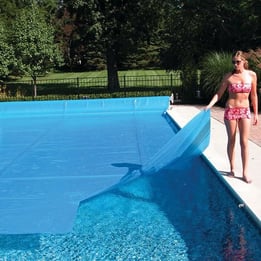
This may be the cheapest and most popular tool that pool owners are using.
Independent studies have concluded that if the pool is equipped with a solid cover, the evaporative loss is reduced by 95%.
Having these covers can keep the water from evaporating over time, slow down condensation, and maintain its level. When the pool is not being used during the colder seasons, the cover can keep the water level the same for months after use.
Photo courtesy of Leslie's Pool Supplies
This solution doesn’t always require a professional and is something any homeowner can do themselves.
By performing what is known as the “bucket test”, you can be proactive about guarding against leaks. The "bucket test" allows you to proactively detect leaks in your swimming pool. Here's the step-by-step procedure:
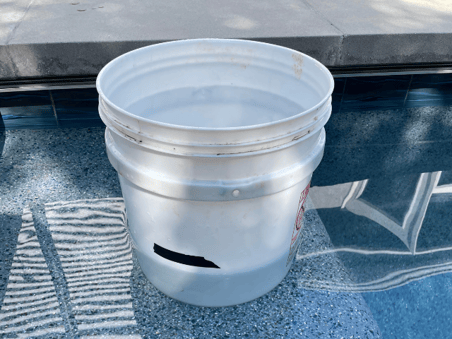
Using this simple test on your pool can save you gallons of water in the long run.
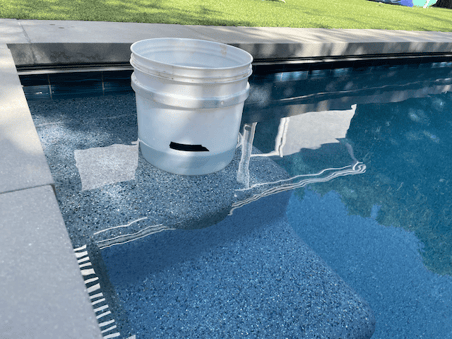
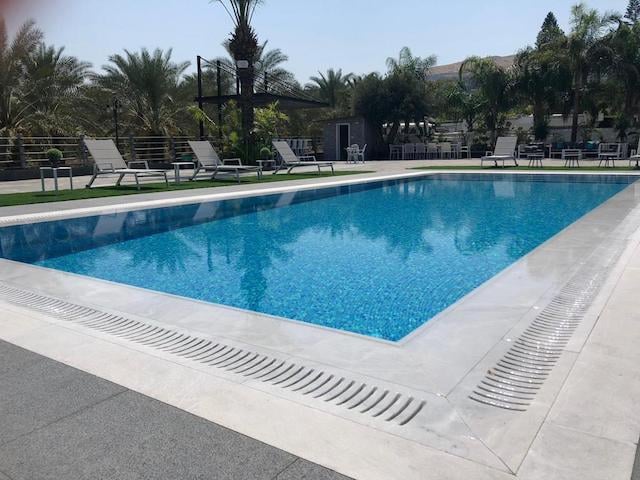 Photo courtesy of Nikolaos Kostakis
Photo courtesy of Nikolaos KostakisNow that we’ve unpacked a few common myths about pool water conservation and their solutions, let’s dive into some more tools that you can use to stay on top of water restrictions.
It’s pretty unanimous that the drought is something that should be taken seriously, as it may have far-reaching implications. Now that we are in 2023, it’s even more crucial that we do our part to conserve water at this time.
This annual drought seems like a foreboding threat that’s hard to strategically prepare for, so we recommend that you check out this bulletin from the CPSA (California Pool and Spa Association) to better understand the nuances of the drought and what you can do as a pool owner to avoid being left out to dry.
At J Designs Pool and Spa, long-term planning is of paramount importance; we strive to keep you in the know so that our customers aren’t blindsided by sudden unforeseen circumstances. While we can’t perfectly plan for every contingency, we can be ready with knowledge and foresight! That being said, be sure to explore these valuable resources that delve into construction delays and provide updated insights on cost factors:
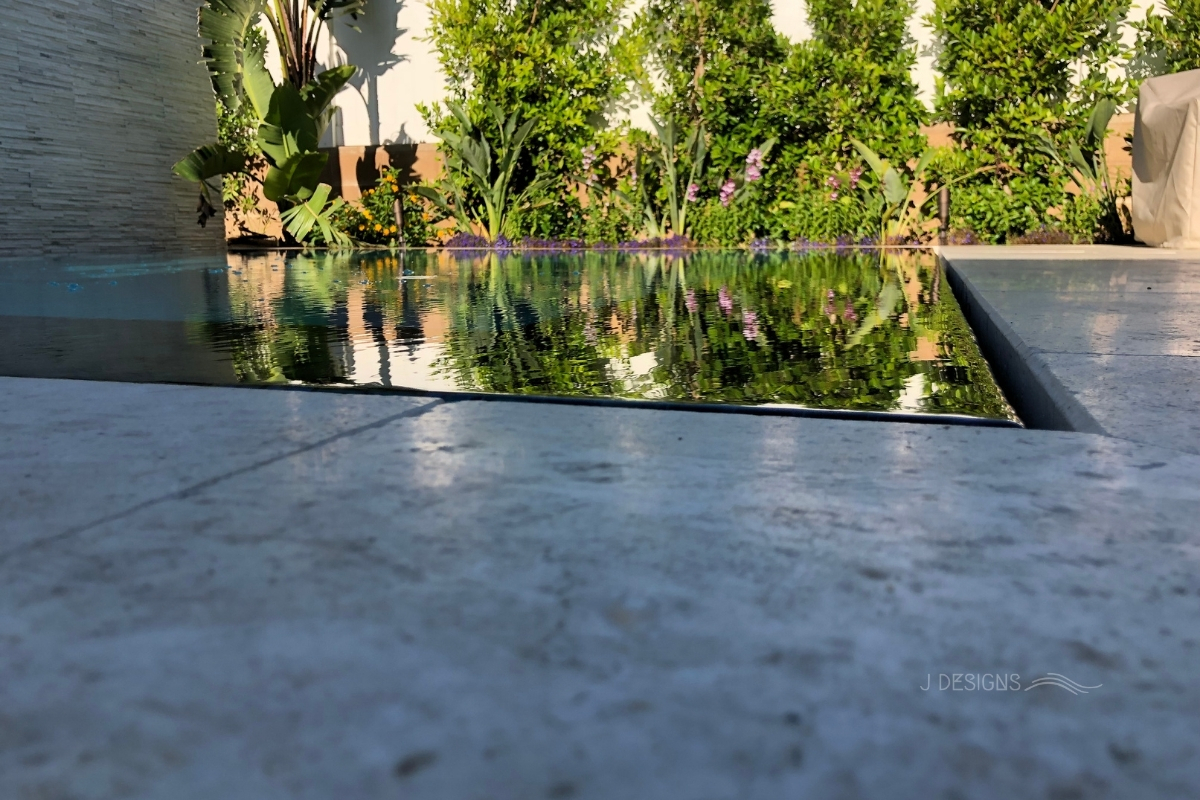
Have you ever seen a pool that looks like a mirror? Water blends seamlessly into the edge, perfectly level with the deck, flowing evenly in every...
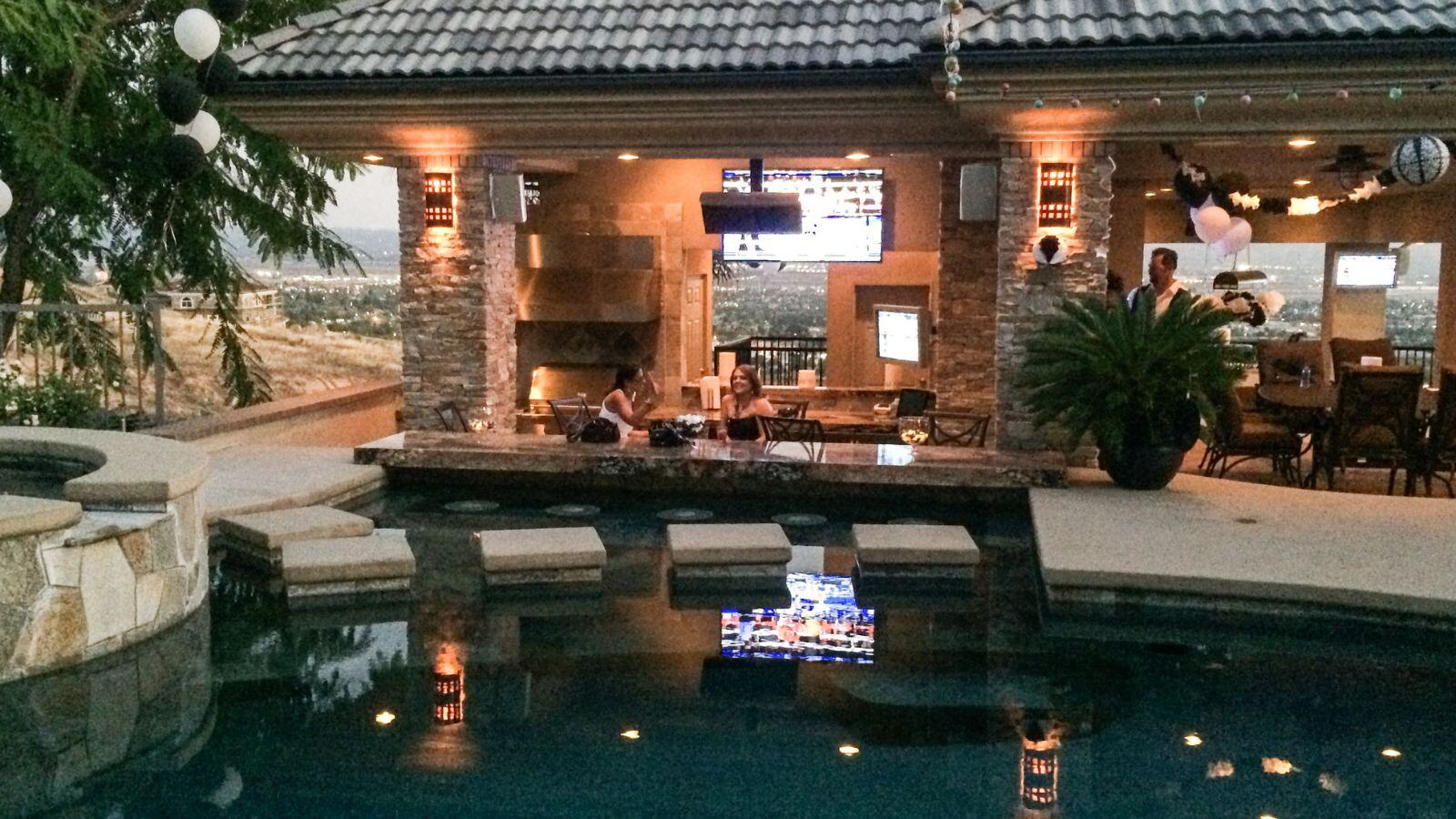
Pool season is here, and it’s not just about crystal-clear water anymore. Today’s most memorable backyards are multisensory experiences, and...
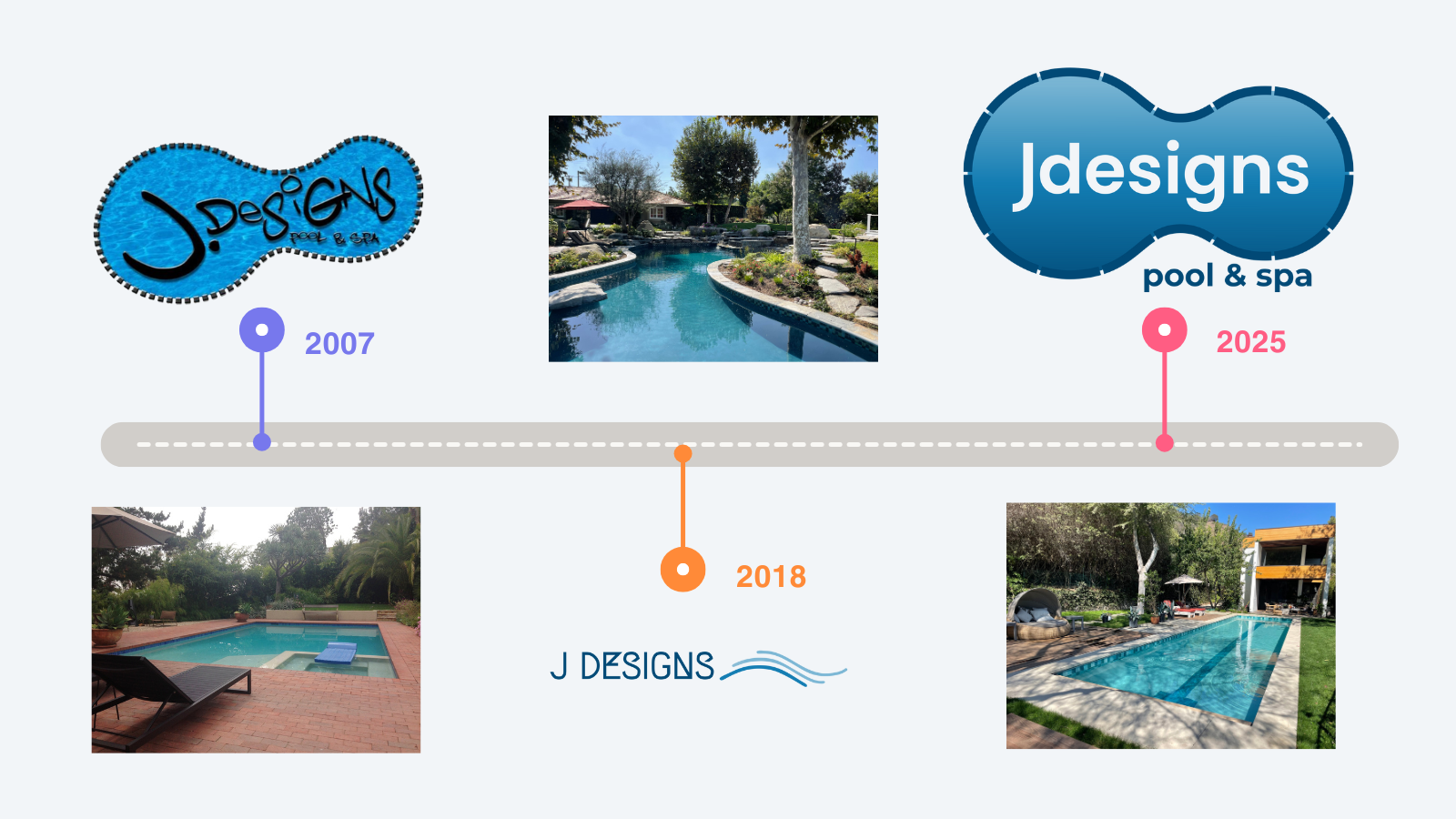
Have you ever wondered how much swimming pool design and construction have changed in the last 18 years? Or how a company can evolve from sketching...